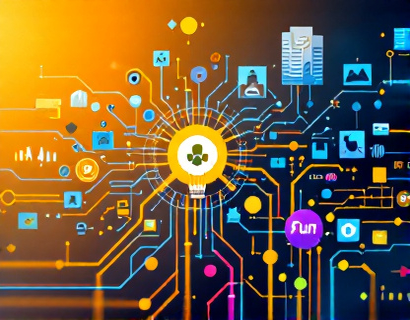Next-Gen Login Management: Elevating Digital Security and Convenience
In the digital age, managing multiple online accounts has become an everyday challenge. With the proliferation of services ranging from social media to e-commerce and cloud storage, the number of logins can quickly become overwhelming. This not only leads to a cluttered digital life but also increases the risk of security breaches due to weak or reused passwords. The need for a sophisticated yet user-friendly solution to manage these logins securely and efficiently has never been more critical. This article delves into the advancements in online authentication technologies that promise to simplify and secure your digital life.
Understanding the Importance of Advanced Online Authentication
Traditional password-based authentication methods are increasingly vulnerable to cyber threats. With the rise of sophisticated hacking techniques and the frequent exposure of data breaches, it's clear that a more robust approach is necessary. Advanced online authentication solutions go beyond the conventional username and password combination, incorporating multi-factor authentication (MFA), biometric verification, and behavioral analytics to provide a higher level of security. These methods ensure that even if one layer of security is compromised, the account remains protected.
Multi-Factor Authentication: A Key Component
Multi-factor authentication adds an extra layer of security by requiring more than one method of verification. This typically includes something you know (password), something you have (smartphone or token), and something you are (biometric data like fingerprints or facial recognition). By combining these factors, MFA significantly reduces the risk of unauthorized access. For instance, even if a password is compromised, an attacker would still need access to the user's phone or a biometric scan to gain entry.
Biometric Verification: The Future of Secure Logins
Biometric verification leverages unique physical characteristics to authenticate users, offering a seamless and secure experience. Fingerprint scanners, facial recognition, and iris scanning are becoming increasingly common in both consumer devices and enterprise solutions. These methods are not only convenient but also highly secure, as biometric data is unique to each individual and difficult to replicate or steal.
Behavioral Analytics: Detecting Anomalies in Real-Time
Behavioral analytics involves monitoring user behavior patterns to detect potential security threats. This technology analyzes how users interact with their devices and applications, identifying deviations from normal behavior that could indicate a security breach. For example, if a user typically logs in from a specific location and suddenly attempts access from an unfamiliar device or geographic area, the system can flag this activity and prompt additional verification steps.
Benefits of Advanced Login Management Solutions
The integration of advanced authentication methods into login management solutions offers numerous benefits. Firstly, it enhances security by reducing the reliance on vulnerable passwords. Secondly, it simplifies the user experience by providing a unified interface for managing multiple accounts. This not only saves time but also minimizes the risk of human error, such as forgetting passwords or using weak credentials.
Streamlined Account Management
A robust login management solution allows users to store and manage all their credentials in one secure location. This central repository ensures that users do not need to remember multiple passwords or store them in insecure locations like note-taking apps or sticky notes. The solution can automatically fill in login fields, reducing the friction associated with logging into multiple sites and applications.
Cross-Platform Compatibility
Modern login management solutions are designed to be cross-platform compatible, ensuring seamless integration across various devices and operating systems. Whether you're using a smartphone, tablet, or computer, the solution adapts to provide a consistent and secure experience. This flexibility is crucial in today's multi-device world, where users switch between devices frequently.
User-Friendly Interfaces and Accessibility
Despite the advanced security features, it's essential that these solutions remain user-friendly and accessible. A well-designed interface ensures that users of all technical backgrounds can easily navigate and utilize the features without feeling overwhelmed. Intuitive design elements, clear instructions, and responsive support contribute to a positive user experience, encouraging adoption and consistent use.
Customization and Flexibility
Advanced login management solutions often offer customization options to meet specific user needs. Users can set preferences for notification alerts, choose which accounts to prioritize, and configure MFA settings according to their comfort level. This flexibility ensures that the solution adapts to the user rather than the other way around, enhancing both security and convenience.
Implementing Advanced Login Management in Daily Life
For tech-savvy individuals seeking enhanced online security, integrating an advanced login management solution into their daily routine can be a game-changer. By centralizing their credentials and leveraging strong authentication methods, they can enjoy a more secure and streamlined digital experience. Here's how to get started:
- Research and select a reputable login management solution that aligns with your security needs and preferences.
- Download and install the application on your devices, ensuring compatibility across all platforms you use.
- Create a strong master password or use biometric authentication to secure your account.
- Import your existing login credentials, starting with the most critical accounts such as banking and email.
- Enable MFA for an added layer of security on all supported accounts.
- Regularly review and update your credentials and security settings to stay ahead of potential threats.
Real-World Applications and Use Cases
The benefits of advanced login management extend beyond individual users to businesses and organizations. In a corporate environment, a centralized solution can help manage employee access to various systems and applications, ensuring compliance with security policies and reducing the risk of internal threats. For remote workers, it provides a secure way to access company resources from anywhere, maintaining productivity and security.
In the healthcare sector, where patient data security is paramount, advanced login management can help protect sensitive information while ensuring that medical professionals have quick and easy access to necessary records. Similarly, in the financial industry, robust authentication methods are essential for safeguarding customer data and preventing fraud.
Future Trends in Login Management
The field of login management is continually evolving, driven by technological advancements and changing user expectations. Some key trends to watch include:
- Increased adoption of passwordless authentication, eliminating the need for traditional passwords altogether.
- Enhanced integration with Internet of Things (IoT) devices, providing secure access to a growing ecosystem of connected devices.
- Greater emphasis on privacy and data protection, with solutions that comply with stringent regulations like GDPR and CCPA.
- Artificial intelligence and machine learning to further refine behavioral analytics and threat detection.
Conclusion
Advanced login management solutions represent a significant step forward in digital security and convenience. By combining multi-factor authentication, biometric verification, and behavioral analytics, these tools offer a comprehensive approach to protecting your online identity. As technology continues to advance, the future of login management promises to be even more secure and user-friendly, making it easier than ever to navigate the complex landscape of online accounts.










































